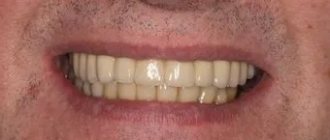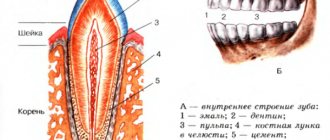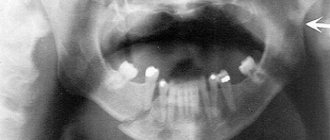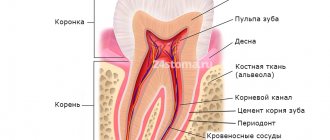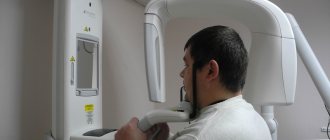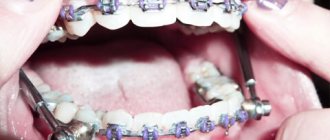Reconstructive surgery is a special branch of plastic surgery, the task of which is to restore damaged structures and organs.
The face is one of the most vulnerable and injury-prone areas. A large number of road traffic accidents, military operations and terrorist attacks, as well as sports and domestic injuries lead to an increase in the number of people who have received severe injuries to the facial skeleton.
The face consists of a large number of thin bone plates, which makes the diagnosis and treatment of post-traumatic injuries of the facial skeleton very difficult.
Injuries to the facial bones lead to functional impairments such as
- Changing the location of the eyeball
- Nasal breathing disorder
- Malocclusion
In addition to functional disorders, social adaptation disorders and severe mental disorders due to worries about lost attractiveness often occur.
Benefits of facial skeletal restoration at ART-Clinic
Online consultations for patients from the regions
A team of highly qualified specialists with extensive experience
Modern minimally invasive techniques of operations and reconstructions
Affordable prices, promotions, discounts, installments
Reconstructive surgery is a priority area of activity for ART-Clinic. A team of highly qualified plastic surgeons led by Professor A.I. Nerobeev is ready to help people in trouble.
Doctor of Medical Sciences, Professor A.I. Nerobeev is one of the most famous maxillofacial surgeons in Russia, his main specialization is reconstructive surgery
The combination of advanced technologies, modern equipment and the highest professionalism of surgeons is a reliable basis for achieving good results from operations to restore the facial skeleton.
Make an appointment with Professor Nerobeev by phone and 8 800 500 42 32 (calls within Russia are free) or using a special form.
Can complications occur after orthognathic surgery?
The result of this surgical intervention is completely predictable, so complications after surgery in most cases should not occur. There may be temporary numbness of the lips. However, in the postoperative period this is acceptable and even helps the patient avoid pain. When the previous sensitivity of the lips returns, there is no more pain.
You can insure yourself against the negative consequences of surgery if you seek help from reliable specialists.
Read more about facial skeletal reconstruction
Restoration of the facial skeleton and elimination of post-traumatic deformations of appearance is a very complex set of diagnostic, surgical and rehabilitation procedures.
Preoperative planning
Preoperative planning is one of the most important components of the success of the operation and includes several stages:
- photographing;
- computed tomography, which gives a visual image of the state of the facial bone skeleton, which allows the doctor to plan the necessary actions and calculate the required volume of grafts;
- if necessary, production of plastic bone models based on 3D computed tomography data.
Features of the operation
The use of modern methods of reconstructive surgery makes it possible to restore the facial skeleton simultaneously with the reconstruction of damaged soft tissues.
The access points through which surgery is performed may be in the scalp, inside the mouth, or under the ciliated edge of the lower eyelid, that is, in places where they will not be noticeable after surgery.
What grafts are used?
To restore the facial skeleton, grafts made of titanium, graphite, and plastics are used. The most stable result is provided by the use of autografts, i.e. tissues taken from the patient himself.
As world experience in the field of reconstructive operations of the facial skeleton shows, the use of autografts gives the most stable and predictable result. Autografts are not subject to resorption or suppuration; they are able to integrate with surrounding tissues, which distinguishes them favorably from artificial materials.
Using special microsurgical techniques, it is possible to transplant areas of bone and soft tissue along with nerves and feeding vessels. Such grafts help recreate large volumes of bone and soft tissue.
Modern methods of reconstruction of the facial skeleton using progressive transplantation techniques provide good functional and aesthetic results.
Is plastic surgery used to reconstruct the facial skeleton?
A circular facelift performed after the main operation helps to achieve perfection. This method is practically harmless; it helps eliminate sagging soft tissues of the face, remove sagging skin and restore self-confidence.
When orthognathic surgery is contraindicated
Surgeons will not undertake such an operation if the jaws have not yet formed - in adolescents and children. We also highlight such contraindications as:
- cardiovascular diseases;
- problems with blood clotting;
- the presence of precancerous and cancerous diseases;
- diseases of the endocrine or skeletal system;
- diabetes in some stages;
- disorders associated with mental state.
Specialists will most likely refuse those patients who think that this operation can improve their appearance, even without problems with their bite. With all the possibilities of orthognathic surgery to rejuvenate the patient and improve his appearance, it primarily solves serious problems with bite and should not be perceived as a beauty procedure.
Prices for facial skeleton restoration
| Autotransplantation of neurotized muscle using microsurgical technique | 450 000₽ |
| Autotransplantation of a flap with bone inclusion | 600 000₽ |
| Autotransplantation of a revascularized soft tissue flap | 400 000₽ |
| The second stage of nose formation | 90 000₽ |
| Isolation of branches of the inferior alveolar nerve when they are pinched | 160 000₽ |
| Avascular iliac crest autograft harvesting | 60 000₽ |
| Collection of split bone autograft from the cranial vault | 60 000₽ |
| Rib autograft collection | 60 000₽ |
| Closing the palate defect with two flaps from the vestibule of the oral cavity | 140 000₽ |
| Closure of the anterior palate defect with a palatal flap | 150 000₽ |
| Replacement of a defect in the lower and middle zone of the face with a flap on a vascular pedicle | 200 000₽ |
| Excision of paraauricular fistula | 50 000₽ |
| Excision of scars in the eyelid area | 50 000₽ |
| Excision of scars up to 5cm | 35 000₽ |
| Excision of keloid scars from 5 to 10 cm | 90 000₽ |
| Excision of soft tissue fistula | 80 000₽ |
| Mouth angle correction | 60 000₽ |
| Marginal resection of the body of the lower jaw within the alveolar process up to 2 cm | 70 000₽ |
| Marginal resection of the body of the lower jaw within the alveolar process up to 5 cm | 90 000₽ |
| Flap surgery in the oral cavity | 60 000₽ |
| Osteosynthesis (high) of the condylar process of the mandible | 120 000₽ |
| Osteosynthesis of the lower jaw with metal structures (multiple) | 90 000₽ |
| Osteosynthesis of the lower jaw with metal structures (single) | 60 000₽ |
| Osteosynthesis of the zygomatic bone at three points of fixation | 145 000₽ |
| Simultaneous radical parotidectomy with restoration of the branches of the facial nerve using microsurgical techniques | 300 000₽ |
| Ligation of the branches of the great vessels | 90 000₽ |
| Transfer of the deltopectoral flap | 190 000₽ |
| Moving the skin flap to close the wound using the dermatotension method (stage 2) | 120 000₽ |
| Transfer of axial flaps from distant areas | 160 000₽ |
| Transfer of axial flaps from adjacent areas | 80 000₽ |
| Movement of a rotational or sliding single flap | 80 000₽ |
| Movement of rotational or sliding multiple flaps | 160 000₽ |
| Relocation of a free skin autograft | 55 000₽ |
| Relocation of own subcutaneous fat tissue (1 zone) | 50 000₽ |
| Moving triangular flaps over 5cm | 55 000₽ |
| Moving the corner of the eye with correction of the upper and lower eyelids | 90 000₽ |
| Suspending the soft tissues of the face with sutures and threads | 120 000₽ |
| Extended biopsy | 50 000₽ |
| Revision of the lower orbital margin | 80 000₽ |
| Revision of the lower jaw, sequestrectomy with immediate elimination of the defect | 140 000₽ |
| Resection of the upper jaw | 180 000₽ |
| Resection of the submandibular salivary gland | 80 000₽ |
| Reconstruction of the supraorbital rim using split autologous bone from the calvarium | 135 000₽ |
| Reconstruction of the cranio-orbital-facial complex | 275 000₽ |
| Reconstruction of the language | 140 000₽ |
| Reposition and fixation of the zygomatic bone | 100 000₽ |
| Closed reposition of the zygomatic bone or arch without the use of metal structures | 40 000₽ |
| Transposition of the temporalis muscle | 170 000₽ |
| Neuromuscular flap transposition | 250 000₽ |
| Removal of implant, graft | 50 000₽ |
| Removal of foreign body bone from extramedullary metal structures | 60 000₽ |
| Removal of a foreign body with dissection of soft tissues | 60 000₽ |
| Removal of subcutaneous formation with a diameter of up to 5 cm | 35 000₽ |
| Removal of rhinophyma | 65 000₽ |
| Installation of tissue expanders without the cost of expanders (1st stage of dermatension) | 120 000₽ |
| Elimination of blepharoptosis (one eyelid) | 55 000₽ |
| Correction of bilateral upper lip deformity | 125 000₽ |
| Elimination of bilateral microstomy | 110 000₽ |
| Elimination of a scalp defect using two or more rotational flaps | 150 000₽ |
| Elimination of a scalp defect with one rotational flap with removal of a scalp tumor | 180 000₽ |
| Elimination of a defect in the orbital floor with reposition of the eyeball | 150 000₽ |
| Elimination of the defect with a visor-shaped flap | 175 000₽ |
| Elimination of skull bone defects | 130 000₽ |
| Elimination of a nasal wing defect using a cheek flap (stage 2) | 100 000₽ |
| Elimination of a nasal defect using cheek flaps (stage 1) | 165 000₽ |
| Elimination of a nasal defect using a forehead flap (stage 1) | 150 000₽ |
| Elimination of nasal defect using Converse (stage 1) | 180 000₽ |
| Elimination of the defect with movement of tissue complexes (skin, muscles, tendons) | 220 000₽ |
| Elimination of a defect in the cartilage of the nose using autocartilage | 135 000₽ |
| Elimination of eyebrow deformation using a closed method using threads | 40 000₽ |
| Correction of eyebrow deformity with a free skin graft | 50 000₽ |
| Elimination of eyelid deformation with local tissues | 110 000₽ |
| Correction of eyelid deformity with a free skin graft | 70 000₽ |
| Correction of upper or lower lip deformities | 65 000₽ |
| Elimination of deformation of the canthal ligaments | 60 000₽ |
| Elimination of deformity with a musculocutaneous flap including the sternocleidomastoid muscle | 90 000₽ |
| Elimination of deformation of the red border of the upper or lower lip (complete) | 110 000₽ |
| Elimination of deformation of the red border of the upper or lower lip (partial) | 55 000₽ |
| Elimination of deformity using a pedicle flap (stage 2 – cutting off the feeding pedicle) | 50 000₽ |
| Elimination of lower eyelid deformity | 65 000₽ |
| Elimination of lower eyelid deformity using a flap from the upper eyelid | 120 000₽ |
| Elimination of deformation of the lower jaw: mental region + body of the lower jaw + angle of the lower jaw | 150 000₽ |
| Elimination of deformation with a silicone implant in one area (without the cost of the implant) | 130 000₽ |
| Elimination of deformation with a silicone implant, titanium mesh, autologous bone of the fronto-naso-orbital region | 200 000₽ |
| Elimination of deformation with a silicone implant, titanium mesh, autologous bone of the zygomaticoinfraorbital buccal region | 150 000₽ |
| Elimination of deformation of the cheek area | 120 000₽ |
| Elimination of bone defects in the maxillofacial area using autologous bone grafts and/or artificial implants | 170 000₽ |
| Elimination of unilateral microstomy | 75 000₽ |
| Elimination of superficial scar deformation of the perioral area | 60 000₽ |
| Elimination of through scar deformation of the perioral area | 90 000₽ |
| Elimination of partial defect of the auricle | 115 000₽ |
| Elimination of epicanthus | 50 000₽ |
| Cystotomy of extensive cystic formations up to 4 cm | 60 000₽ |
| Cystotomy of extensive cystic formations up to 8 cm | 90 000₽ |
| Partial resection of the lower jaw with immediate elimination of the defect and fixation of the soft tissues of the floor of the mouth | 230 000₽ |
| Extirpation of median cysts and fistulas of the neck | 125 000₽ |
View full price list
Do I need to prepare for orthognathic surgery?
The preparatory period can last more than one week. As mentioned above, orthognathic surgery is completely predictable. Therefore, at the first stage, the specialist decides what results should be after treatment:
✔
determines the necessary future parameters;
✔
finds the maximum possible number of closures between opposing teeth;
✔
monitors how the results of the operation will affect the patient’s appearance.
In most cases, when preparing for surgery, surgeons use special 3D modeling tools for the result. Thanks to the software, a template is obtained and the paths that will lead to the expected effect of orthognathic treatment are found.
Then orthodontic treatment with braces or aligners begins. This can take from several months to a year and a half. Once the dentition is aligned, orthognathic surgery can begin.
Orthognathic intervention takes 4-6 hours. Then the patient remains in the clinic for another 3-4 days under the supervision of the attending physician. Afterwards you can return home, and after 3 weeks you can go back to work.
Can the screw fastening become loose and the prosthesis fly off...?
Screw fastening is currently considered the most advanced when carrying out both single restorations and when restoring a full row of teeth - this is the most reliable solution. The dentures are attached using small screws - they are inserted into the abutment and implant through the chewing surface of the crowns. The holes are filled from above with a liquid light-curing polymer. This fastening allows, if necessary, to remove the prosthesis, reline it or clean it without damaging the implants.
MYTH
All-on-4 does not have the ability to combine the method of fastening the prosthesis with screws and with cement at the same time.
IS IT TRUE
Yes, indeed it is. But this is an advantage! No one will combine two completely different types of fastening in one prosthesis, because then there is no point in more expensive screw fixation. The prosthesis is placed on the entire jaw and is a complete structure, not assembled into segments. If some part of it is fixed to cement, then it will be impossible to remove it without cutting, even if there is a screw fixation in another area. This means that after such removal, the entire structure of the prosthesis will need to be changed.
Of course, screw fastening has certain disadvantages. In particular, loss of screw fixation may occur. But this phenomenon is extremely rare in good implant systems and most often occurs due to refusal of timely correction or change of the adaptive design to a permanent one, as well as abuse of hard foods. The situation is easily corrected - the screws are tightened/changed.
If you follow all the recommendations of your doctor, undergo timely examinations as part of free service, you will not encounter problems with the integrity of the prosthesis.
SURGICAL TREATMENT OF DISEASES AND TUMORS OF THE SALIVARY GLANDS
— surgical treatment of wounds; — removal of stones from the ducts of the salivary gland; — removal of the submandibular salivary gland; — subtotal resection of the parotid salivary gland with isolation of the branches of the facial nerve; — total resection (parotidectomy) of the parotid salivary gland with isolation of the branches of the facial nerve; — surgery to close a salivary fistula;
Operations performed on the parotid salivary gland and associated with manipulation of the branches of the facial nerve are performed under optical magnification on a Zeiss Omni Vario 750 microscope, which avoids its traumatization.
SURGICAL TREATMENT OF OTHER ORAL DISEASES
— operations for odontogenic diseases of the paranasal sinuses, including plastic surgery of defects of the alveolar process of the upper jaw (plasty of oroantral communications); — microsinusrotomy with simultaneous plastic surgery of the oroantral communication; — plastic surgery of the oral vestibule; — plastic surgery of the frenulum of the tongue; — plastic surgery of the frenulum of the upper lip; — tooth extraction of any complexity, both under local anesthesia and general anesthesia;
One of the oldest specializations of the oral cavity surgeon is the preparation of the oral cavity for prosthetics. In the hospital, any options for bone grafting of the alveolar processes of the jaws are performed , such as sinus lifting, plastic with bone blocks and “sandwich” plastic, as well as the installation of dental implants for subsequent dentures.
What to do in the postoperative period
In addition to following all the instructions of the attending physician, you need to pay attention to several important points.
- You need to apply ice to the jaw area and apply ointment or gel for swelling.
- Strictly observe daily routine and hygiene: get up, walk around, do not smoke, eat.
- Avoid heavy objects, do not bend over, avoid sudden movements.
- Do not hesitate to seek help if there is any discomfort.
The second most popular question concerns nutrition during the postoperative period. Contrary to expectations, the straw does not always help. According to reviews from people who have undergone this operation, it is better to use a small spoon. The only difficulty with eating usually is that it takes longer. In the hospital, during the postoperative period, patients are prescribed a gentle diet, in which dishes are served pureed.
Immediately after returning home, you can choose your usual menu, guided by your preferences. However, at first, the food should still be pureed. If necessary, you can consult a gastroenterologist.
If the prosthesis is placed on the day of surgery, the gums will be injured
Adaptive prostheses for All-on-4 prosthetics are installed within 4-8 hours or on the 3rd day. In the first case, they are frameless, in the second - with a metal base for additional splinting of installed implants. Firstly, such prostheses are very light. Secondly, they are securely fixed on the implants, that is, they do not move under load, which means they do not touch the gums or injure them, and do not interfere with the full healing of the mucous membranes. Thirdly, their interior is very smooth and highly polished. That is, there can be no talk of any injury.
MYTH
Instant loading with a prosthesis impairs the healing of gums that have sutures; it is better to wait at least 3 days.
IS IT TRUE
Instant load, on the contrary, improves engraftment due to improved blood supply and high-quality lymphatic drainage. Metabolic processes are initiated optimally. In addition, self-absorbable barrier membranes are applied during the period of primary healing of soft tissues, which eliminates the additional risk of infection and inflammation.
In addition, the neck and upper body of Nobel Biocare implants are covered with an anodized gold Xeal™ surface, which ensures the integration of soft tissues with the implant, which subsequently creates a reliable barrier against the microbial environment entering the bone tissue and significantly reduces the level of gum and marginal bone loss.
Historical fact! Nobel Biocare are the first in the world to thoroughly develop the era of mucointegration, that is, to create implants with which not only bone, but also periodontal tissue is integrated.
The word “mucus” itself translated from Latin means “mucous”. Accordingly, in this context, mucointegration means the process of combining the implant with the mucous membrane. More precisely, the creation of maximum tight contact (adhesion), resulting in the formation of a barrier that protects the adjacent bone. And this is the key to a long service life of installed implants.
The level of keratinized (attached or upper part) gums with abutments with a Xeal surface is almost 2 times higher than with other systems
Naturally, during the first week, when tissue restoration occurs, the patient requires more gentle nutrition (more details can be found here), drug therapy, and high-quality hygienic care are important. But there will be no pain or acute discomfort. If the unpleasant sensations persist, there is a feeling of contact between the prosthesis and the gums, you can contact your doctor at any time to correct the structure.

